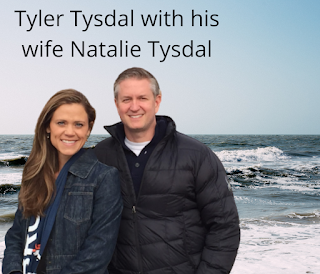To keep knowing and private equity tyler tysdal advancing your profession, the list below resources will be useful:.
Growth equity is frequently referred to as the private financial investment method occupying the middle ground between equity capital and traditional leveraged buyout methods. While this might hold true, the method has actually developed into more than simply an intermediate personal investing method. Growth equity is frequently referred to as the personal financial investment technique inhabiting the middle ground between equity capital and standard leveraged buyout techniques.

This combination of elements can be engaging in any environment, and even more so in the latter stages of the marketplace cycle. Was this short article helpful? Yes, No, END NOTES (1) Source: National Center for the Middle Market. Q3 2018. (2) Source: Credit Suisse, "The Amazing Diminishing Universe of Stocks: The Causes and Repercussions of Fewer U.S.
Alternative investments are intricate, speculative financial investment cars and are not appropriate for all investors. A financial investment in an alternative financial investment involves a high degree of danger and no guarantee can be considered that any alternative mutual fund's investment goals will be achieved or that investors will get a return of their capital.

This market information and its value is a viewpoint just and should not be trusted as the only important info available. Info included herein has actually been gotten from sources believed to be trusted, however not ensured, and i, Capital Network assumes no liability for the details provided. This info is the property of i, Capital Network.
This investment strategy has helped coin the term "Leveraged Buyout" (LBO). LBOs are the primary financial investment technique type of many Private Equity firms.
As pointed out previously, the most well-known of these deals was KKR's $31. 1 billion RJR Nabisco buyout. This was the biggest leveraged buyout ever at the time, many people thought at the time that the RJR Nabisco deal represented the end of the private equity boom of the 1980s, since KKR's investment, however popular, was eventually a substantial failure for the KKR investors who purchased the company.
In addition, a lot of the cash that was raised in the boom years (2005-2007) still has yet to be used for buyouts. This overhang of dedicated capital avoids lots of financiers from committing to buy brand-new PE funds. In general, it is estimated that PE firms manage over $2 trillion in properties worldwide today, with near $1 trillion in dedicated capital available to make brand-new PE investments (this capital is often called "dry powder" in the industry). .
For circumstances, an initial investment might be seed financing for the business to start building its operations. Later on, if the business proves that it has a practical item, it can get Series A financing for more growth. A start-up company can complete several rounds of series funding prior to going public or being acquired by a monetary sponsor or strategic buyer.
Leading LBO PE companies are defined by their big fund size; they are able to make the largest buyouts and take on the most financial obligation. However, LBO deals can be found in all sizes and shapes - Ty Tysdal. Overall transaction sizes can vary from tens of millions to tens of billions of dollars, and can occur on target business in a wide range of markets and sectors.
Prior to executing a distressed buyout opportunity, a distressed buyout firm has to make judgments about the target company's worth, the survivability, the legal and reorganizing concerns that might develop (must the business's distressed properties require to be reorganized), and whether the financial institutions of the target company will end up being equity holders.
The PE firm is needed to invest each respective fund's capital within a duration of about 5-7 years and then typically has another 5-7 years to sell (exit) the financial investments. PE firms typically use about 90% of the balance of their funds for brand-new financial investments, and reserve about 10% for capital to be used by their portfolio business (bolt-on acquisitions, extra readily available capital, and so on).
Fund 1's dedicated capital is being invested in time, and being returned to the minimal partners as the portfolio companies in that fund are being exited/sold. As a PE firm nears the end of Fund 1, it will require to raise a new fund from brand-new and existing minimal partners to sustain its operations.